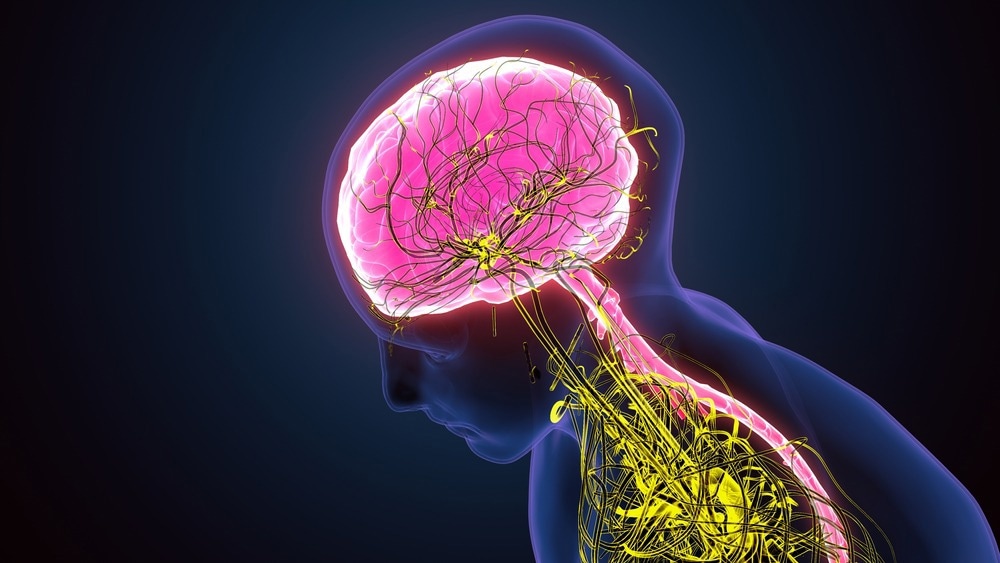Extracellular vesicles (EVs) have played a vital role in transporting important bioactive compounds bi-directionally, crossing the blood-brain barrier (BBB). This approach of shuttling important bioactive compounds has paved the path for novel diagnostics and therapy for central nervous system (CNS) diseases.

Study: Nanotechnology-Inspired Extracellular Vesicles Theranostics for Diagnosis and Therapy of Central Nervous System Diseases. Image Credit: Life science/Shutterstock.com
Recently, scientists have reviewed the effectiveness of nanotechnology-inspired EV systems for therapeutics and diagnostics of CNS diseases. This review has been accepted for publication in ACS Applied Materials and Interfaces.
For this review, relevant articles from the Web of Science and PubMed databases were obtained. This study highlighted how the application of nanomaterials has improved the efficacy of EVs against CNS diseases.
Potential of EVs in Disease Therapeutics and Treatment
Extracellular vesicles are naturally released membrane vesicles from most cells that can travel in different types of body fluids. Scientists have classified EVs into three groups, namely, exosomes, microvesicles, and apoptotic bodies, based on their biogenesis.
Exosomes are small vesicles (40−150 nm) and are formed by inward budding of multivesicular bodies (MVB), which are subsequently released upon their fusion with the plasma membrane. Microvesicles are produced via outward budding and fission of the plasma membrane, with sizes that range between 100 and 1000 nm. The apoptotic bodies are the smallest among EVs (1−5 μm) and are released during cell apoptosis.
EVs loaded with various cargos, such as DNAs, miRNAs, mRNAs, lipids, and proteins, are involved with long-distance cell-to-cell communication between immune cells, glia, endothelial cells, and neurons. Research has shown that EVs play an important role in several physiological processes, including neuronal-glial metabolic exchange, neural plasticity, progression of brain pathologies (e.g., stroke and tumors), brain homeostasis, and neurovascular integrity. The evidence strongly supports the application of EVs as potential diagnostic and therapeutic agents.
More recently, EVs have attracted much attention in biomedical research, especially, as natural therapeutics or carriers, for their low immunogenicity, ability to cross the BBB, and innate stability. Additionally, EVs can transfer complex information from the brain to the peripheral circulation system after crossing the BBB. This phenomenon has been exploited to design a novel liquid biopsy platform for diagnosing and monitoring CNS diseases.
Nanotechnology-based EV System for the Treatment and Diagnosis of CNS Diseases
Alzheimer’s disease (AD), traumatic brain injury (TBI), Parkinson’s disease (PD), glioblastoma (GBM), and peripheral nerve injury are some of the common CNS pathologies that are prevalent in the aging population worldwide. The majority of the treatment strategies fail due to low efficacy, toxicity, and brain penetration. Over 98% of small molecule drugs and 100% of peptides, nucleic acids, and proteins are impeded by BBB from reaching the CNS parenchyma. Advancements in nanotechnology have helped alleviate the challenges associated with the application of EVs against CNS diseases.
The multiplex biomarkers in EVs make them an ideal candidate for the early detection of refractory CNS diseases. Presently, a clinical trial is evaluating the efficacy of exosomal LRRK2 as a biomarker for PD. Another study has analyzed the efficacy and safety of allogeneic adipose mesenchymal stem cell (MSC)-derived exosomes in AD patients. Scientists have also investigated the potential of engineered EVs for CNS delivery.
Research has shown that superparamagnetic iron oxide nanoparticles (SPIONs) have a strong theranostic potential for CNS diseases. The introduction of SPIONs to EV showed significant enhancement in their targeting abilities. Additionally, these can be accumulated in the designated body tissues via magnetic guidance.
EVs loaded with SPIONs and curcumin targeted to gliomas, exhibited a strong antitumor effect. Magnetic navigation considerably enhanced magnetic hybrid EVs localization to the targeted injured sites. Murine models showed hybrid EVs were able to specifically accumulate at targeted brain regions with neural inflammation. As gold nanoparticles (AuNP) have shown significant theranostic properties, in the future, the AuNP-based hybrid EVs could be designed for the treatment and diagnosis of CNS diseases.
The retention period of EVs, at the targeted site could be prolonged by encapsulating them in hydrogels. Another advantage of this process is controlled EV release, which can be achieved by modulating the hydrogel porosity, swelling rate, and degradation rate. Importantly, the production of EVs has been enhanced manifold by using nano-based methods, such as the cellular nano-operation method.
Where Do EV-Nanomaterial Hybrid Systems Currently Stand in CNS Disease Management?
Compared to naive EVs or single nanoparticles, EV−nanomaterial hybrid systems have exhibited superior therapeutic efficacy and diagnostic strategies for CNS diseases. Many EV-nanomaterial hybrid systems can travel across BBB and deliver their cargo at the targeted site. To date, EV-nanomaterial hybrid systems have been evaluated for their therapeutic efficacy and imaging applicability against many CNS diseases, such as AD, stroke, gliomas, and PD.
A small number of preclinical proof-of-concept studies have reported some changes in EV composition after being combined with nanoparticles. This observation limits their pharmaceutical application. Additionally, challenges related to large-scale manufacturing of EVs and inefficiency in cargo loading are some of the limitations. In the future, researchers should focus on developing integrated devices for the automated manufacture of therapeutic EVs with high purity, efficiency, and low variation.
Reference
Tian, T., Qiao, S. and Tannous, A.B. (2022) Nanotechnology-Inspired Extracellular Vesicles Theranostics for Diagnosis and Therapy of Central Nervous System Diseases. ACS Applied Materials and Interfaces. https://pubs.acs.org/doi/10.1021/acsami.2c07981
Disclaimer: The views expressed here are those of the author expressed in their private capacity and do not necessarily represent the views of AZoM.com Limited T/A AZoNetwork the owner and operator of this website. This disclaimer forms part of the Terms and conditions of use of this website.